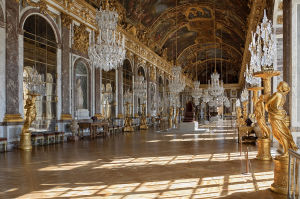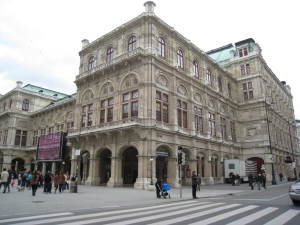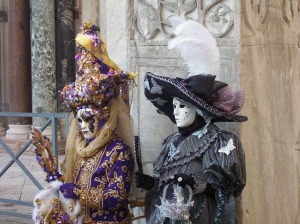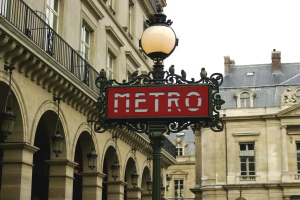Winter can be a great time for travel in Europe. Every autumn I receive emails from readers who have decided to travel to Europe during the winter and who want to know if that will be okay. Or, they want to know where in Europe they should go so cold weather is less of a problem. This is a version of the question, “When is the best time to go to Europe?” My reply is always the same for winter as for any other time of the year: where and when to go depends on what you enjoy doing. Here are a few winter travel ideas for Europe.
Decide what kinds of things you want to do while you are in Europe. For example, if you want to ski, then you have to go in the winter (January and February are best). If you want to see the Northern Lights, then you need to be in northern Scandinavia or northern Russia during the dark of the moon closest to the Spring Equinox (on March 20, 2015, for both the equinox and the new moon). If you want to see beautiful scenery and visit Mediterranean lands (southern Spain and France, Italy south of the Alps, most of Greece) then you should be there in the Spring (e.g., April) when the grass is still green and there are wildflowers everywhere. If you want to include hiking, such as in the Swiss Alps, then you need to go in the late spring through summer. If you want to spend time at the beach and swim in the ocean, then you need to go to a Mediterranean destination in September or October; the ocean will still be warm but the hordes of tourists that make being there a miserable experience in August would have gone home. If you are mostly interested in urban and cultural activities, such as visiting museums, shopping, people watching, sightseeing at churches, castles, forts, and other historic places, then any time of year will be fine except I would avoid going to any major city in July or August (too crowded, too expensive). So, tell me what you fancy doing, and I can give you personalized advice on when and where to go.
Specifically for winter, I offer the following ideas of where to go and what to do during a winter trip to Europe:
Christmas Markets – The most celebrated Christmas Markets are in Germany, but you can find them everywhere in Europe from the end of November to the end of December. If you like, you can visit several Christmas Markets while on a river cruise (e.g., on the Main River between Frankfurt and Nuremberg in Germany or on the Danube River between Nuremberg and Vienna with an extension to Prague). Or how about enjoying a medieval Christmas Market at the Tower of London or a Victorian one at Charles Dickens’ hometown of Rochester, England?
Polar Nights – Experience what it is like when days are really short. Be dazzled by starlight reflected off snow.
Northern Lights – the best time to see Northern Lights is during the dark of the moon near the Spring Equinox. In 2015, the “new moon” is on March 20, the day of the 2015 equinox. To increase your chances of seeing the northern lights, plan on being in Arctic Europe a few days before and after that date.
Skiing – You can enjoy downhill skiing in the Alps of Switzerland, France, Italy, Austria, and Slovenia. There are ski areas in mountains from Spain to Scandinavia. Cross-country skiing can be enjoyed throughout Europe wherever there is an accumulation of snow. A special cross-country ski opportunity is the hut-to-hut skiing of the Haute Route in the Swiss and French Alps.
Carnival – the oldest celebration of Carnival is the Carnivale di Venezia which dates from the 13th century, but there are carnival celebrations in many other cities in Europe, such as in Nice, France; Barcelona, Spain; and Cologne, Germany. Carnival always ends on Shrove Tuesday (the day before the Ash Wednesday beginning of Lent) but might start three or more weeks before then. The term, carnivale, comes from the Latin for “farewell to meat.” For 2015, Carnivale in Venice begins January 31 with the main events from February 7 and to February 17.
Museums, concerts, high culture – If you stay in major cities, such as Barcelona, London, Vienna, Berlin, and Paris, which have well developed subway systems, you can go to indoor attractions without facing inclement weather too much.
Winter is a great time for going to museums when the hordes of summer tourists are not there. Imagine not having to look at the Mona Lisa over the shoulders of a mass of tourists?

Photo available from Myrabella under CC BY-SA 3.0.
Or being able to see the mirrors in Versailles’ Hall of Mirrors without having to hold your camera above your head to see them?
And it doesn’t matter what the weather is outside when you go to a concert, the opera, or the theatre.

Renaissance façade of the Staatsoper (State Opera House). It was built in 1869, badly damaged during WW II, and restored to its former glory. It sells out to capacity for most performances.
Do what the locals do – spend a cozy evening in a pub or high have tea in the afternoon. In the winter, other pub patrons are more likely to be locals rather than tourists. One of my personal favorite European experiences was on a rainy/snowy March Sunday afternoon in Edinburgh, Scotland, when I had high tea at the Balmoral Hotel. Outside it was blustery, but indoors I dined on hot tea, finger sandwiches, scones with clotted cream and jam while a string quartet played classical pieces. I and most other patrons read The Scotsman newspaper: no one rushed us; it was just fine for us to spend the afternoon relaxing over the Sunday paper.
The bottom line: don’t be put off by cold weather, rain, and snow. You can have a wonderful time in Europe especially in the winter.




















